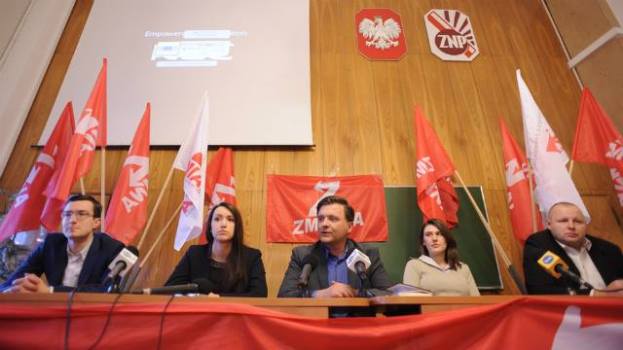 By: Jafe Arnold
By: Jafe Arnold
Tragedy & Farce: Reconsidering Marxian Superstructural Analysis of Heterodox Social Movements
-
Part II: A Heuristic Reconsideration of Marxism and Modernity in Eurasia

![]() n the introduction to this series, we presented and provided some cursory remarks on the general topic of our investigation. We drew attention to the problematic application of Marx’s thesis concerning the “poetry of the past” (as presented in The Eighteenth Brumaire of Louis Bonaparte) and the overriding confusion of the relationship between the superstructure (ideology, the “poetry”) and the base (objective class forces) which manifests itself when Marxists analyze and attempt to identify the trajectory of socio-political movements, particularly those syncretic ones in the late modern and post-modern era which often defy normative stereotypes of aesthetics, presenting apparently “unorthodox,” and perhaps contradictory superstructural “cues,” the latter of which, given the faulty precedent set by Marx in contradiction to this own framework, confuses Marxists in their analyses and more often than not leads to erroneous categorizations of otherwise “progressive” movements or states as “reactionary.”
n the introduction to this series, we presented and provided some cursory remarks on the general topic of our investigation. We drew attention to the problematic application of Marx’s thesis concerning the “poetry of the past” (as presented in The Eighteenth Brumaire of Louis Bonaparte) and the overriding confusion of the relationship between the superstructure (ideology, the “poetry”) and the base (objective class forces) which manifests itself when Marxists analyze and attempt to identify the trajectory of socio-political movements, particularly those syncretic ones in the late modern and post-modern era which often defy normative stereotypes of aesthetics, presenting apparently “unorthodox,” and perhaps contradictory superstructural “cues,” the latter of which, given the faulty precedent set by Marx in contradiction to this own framework, confuses Marxists in their analyses and more often than not leads to erroneous categorizations of otherwise “progressive” movements or states as “reactionary.”
In this installment, we will delve deeper into the theoretical underpinnings of Marxism as an ideology of Modernity with the aim of uncovering the paradoxes which underly the precedent set by Marx in The Eighteenth Brumaire of Louis Bonaparte. We will then proceed to present the general contours along which our study will unfold as we examine Marxism itself through its own lens, reconsider its perception of heterodox socio-political movements and the theoretical and practical implications therein, and trace the trajectory of Marxism’s paradoxical hermeneutics in the direction of a syncretic political ideology.
Marxism, the 20th Century, and the Fourth Political Theory
It has long since become clear that the First Political Theory (1PT), Liberalism, emerged from the 20th century as the victorious ideology of Modernity. This unavoidable fact and its practical implications have been analyzed by a number of scholars in a wide variety of fields. The other two main socio-political theories, Marxism (with its various offshoots) and Fascism (along with its various strains), were played against each other, demonized from all directions, and dealt decisive defeats in crucial spheres at different times by the massive ideological, political-economic, and military complex of the 1PT which since the 1990’s became the nightmarish norm for massive swathes of the world’s population. Now, however, as this “End of History” has revealed itself to become increasingly untenable, intolerable, and undesirable, growing attention has been turned towards the various anti-liberal ideologies of Modernity with an eye towards scavenging and critically analyzing their nominal as well as paradoxical anti-Liberal and anti-Modern elements.[1] Continue reading






